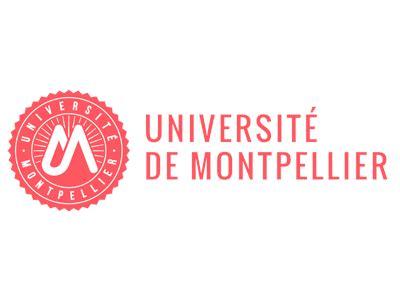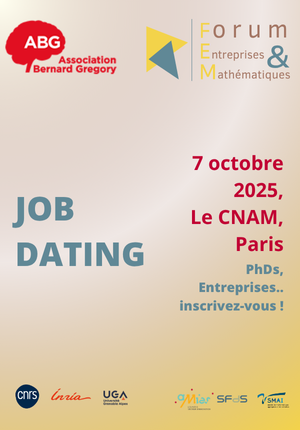Propriétés topologiques de nanohexagones de bismuth // Probing the topological properties of bismuth nanohexagons
|
ABG-128083
ADUM-60738 |
Thesis topic | |
| 2025-01-23 |
Université Paris-Saclay GS Physique
ORSAY Cedex - France
Propriétés topologiques de nanohexagones de bismuth // Probing the topological properties of bismuth nanohexagons
- Physics
isolant topologique, physique mesoscopique
topological insulators, mesoscopic physics
topological insulators, mesoscopic physics
Topic description
Unidimensional conduction is extremely rare, because even a small amount of disorder tends to localise the electron wavefunction at low temperature. The recently discovered Quantum Spin Hall state, in which current is carried by “helical” 1D electrons, i.e. electrons whose spin direction is locked to their propagation direction, thereby hindering backscattering if no spin-flip mechanism is present, may be a remarkable exception to this rule.
The Quantum Spin Hall state is realized in topological materials such as specific graphene assemblies, 2D topological insulators, as well as the newly discovered 3D Second Order Topological Insulators (SOTI), which are three dimensional materials with unidimensional helical states at some of their edges. Our group discovered that bismuth was such a 3D SOTI, using experiments in which superconductivity is induced in perfectly crystalline bismuth nanowires [1-4]. Those nanowires however vary in crystalline orientation, and are rather large (200 nm in diameter and several microns in length). This leads to many non-topological surface and bulk states, that coexist with the topological state. This can hinder a deeper understanding of the topological properties of bismuth, and motivates the search for other SOTI materials, as well as more controlled forms of bismuth.
The PhD project consists in detecting signatures of helical edge states in thin (8 nm) bismuth nanohexagons, synthesized by collaborators (ICMol Valencia, Spain [5]). To this end, several experiments will be conducted, from low temperature transport measurements with different electrodes configurations and materials (non-superconducting or superconducting), to high sensitivity detection of orbital moments due to currents circulating around the edges of the hexagons (see figure).
------------------------------------------------------------------------------------------------------------------------------------------------------------------------
------------------------------------------------------------------------------------------------------------------------------------------------------------------------
Unidimensional conduction is extremely rare, because even a small amount of disorder tends to localise the electron wavefunction at low temperature. The recently discovered Quantum Spin Hall state, in which current is carried by “helical” 1D electrons, i.e. electrons whose spin direction is locked to their propagation direction, thereby hindering backscattering if no spin-flip mechanism is present, may be a remarkable exception to this rule.
The Quantum Spin Hall state is realized in topological materials such as specific graphene assemblies, 2D topological insulators, as well as the newly discovered 3D Second Order Topological Insulators (SOTI), which are three dimensional materials with unidimensional helical states at some of their edges. Our group discovered that bismuth was such a 3D SOTI, using experiments in which superconductivity is induced in perfectly crystalline bismuth nanowires [1-4]. Those nanowires however vary in crystalline orientation, and are rather large (200 nm in diameter and several microns in length). This leads to many non-topological surface and bulk states, that coexist with the topological state. This can hinder a deeper understanding of the topological properties of bismuth, and motivates the search for other SOTI materials, as well as more controlled forms of bismuth.
The PhD project consists in detecting signatures of helical edge states in thin (8 nm) bismuth nanohexagons, synthesized by collaborators (ICMol Valencia, Spain [5]). To this end, several experiments will be conducted, from low temperature transport measurements with different electrodes configurations and materials (non-superconducting or superconducting), to high sensitivity detection of orbital moments due to currents circulating around the edges of the hexagons (see figure).
------------------------------------------------------------------------------------------------------------------------------------------------------------------------
------------------------------------------------------------------------------------------------------------------------------------------------------------------------
Début de la thèse : 01/10/2025
WEB : https://equipes2.lps.u-psud.fr/meso/
The Quantum Spin Hall state is realized in topological materials such as specific graphene assemblies, 2D topological insulators, as well as the newly discovered 3D Second Order Topological Insulators (SOTI), which are three dimensional materials with unidimensional helical states at some of their edges. Our group discovered that bismuth was such a 3D SOTI, using experiments in which superconductivity is induced in perfectly crystalline bismuth nanowires [1-4]. Those nanowires however vary in crystalline orientation, and are rather large (200 nm in diameter and several microns in length). This leads to many non-topological surface and bulk states, that coexist with the topological state. This can hinder a deeper understanding of the topological properties of bismuth, and motivates the search for other SOTI materials, as well as more controlled forms of bismuth.
The PhD project consists in detecting signatures of helical edge states in thin (8 nm) bismuth nanohexagons, synthesized by collaborators (ICMol Valencia, Spain [5]). To this end, several experiments will be conducted, from low temperature transport measurements with different electrodes configurations and materials (non-superconducting or superconducting), to high sensitivity detection of orbital moments due to currents circulating around the edges of the hexagons (see figure).
------------------------------------------------------------------------------------------------------------------------------------------------------------------------
------------------------------------------------------------------------------------------------------------------------------------------------------------------------
Unidimensional conduction is extremely rare, because even a small amount of disorder tends to localise the electron wavefunction at low temperature. The recently discovered Quantum Spin Hall state, in which current is carried by “helical” 1D electrons, i.e. electrons whose spin direction is locked to their propagation direction, thereby hindering backscattering if no spin-flip mechanism is present, may be a remarkable exception to this rule.
The Quantum Spin Hall state is realized in topological materials such as specific graphene assemblies, 2D topological insulators, as well as the newly discovered 3D Second Order Topological Insulators (SOTI), which are three dimensional materials with unidimensional helical states at some of their edges. Our group discovered that bismuth was such a 3D SOTI, using experiments in which superconductivity is induced in perfectly crystalline bismuth nanowires [1-4]. Those nanowires however vary in crystalline orientation, and are rather large (200 nm in diameter and several microns in length). This leads to many non-topological surface and bulk states, that coexist with the topological state. This can hinder a deeper understanding of the topological properties of bismuth, and motivates the search for other SOTI materials, as well as more controlled forms of bismuth.
The PhD project consists in detecting signatures of helical edge states in thin (8 nm) bismuth nanohexagons, synthesized by collaborators (ICMol Valencia, Spain [5]). To this end, several experiments will be conducted, from low temperature transport measurements with different electrodes configurations and materials (non-superconducting or superconducting), to high sensitivity detection of orbital moments due to currents circulating around the edges of the hexagons (see figure).
------------------------------------------------------------------------------------------------------------------------------------------------------------------------
------------------------------------------------------------------------------------------------------------------------------------------------------------------------
Début de la thèse : 01/10/2025
WEB : https://equipes2.lps.u-psud.fr/meso/
Funding category
Funding further details
Europe - ERC (European Research Council)
Presentation of host institution and host laboratory
Université Paris-Saclay GS Physique
Institution awarding doctoral degree
Université Paris-Saclay GS Physique
Graduate school
564 Physique en Ile de France
Candidate's profile
Formation souhaitée en matière condensée ou physique quantique
Masters Degree with Quantum physics and/or Condensed Matter Physics
Masters Degree with Quantum physics and/or Condensed Matter Physics
2025-07-31
Apply
Close
Vous avez déjà un compte ?
Nouvel utilisateur ?
More information about ABG?
Get ABG’s monthly newsletters including news, job offers, grants & fellowships and a selection of relevant events…
Discover our members
 CESI
CESI  CASDEN
CASDEN  Ifremer
Ifremer  MabDesign
MabDesign  Nokia Bell Labs France
Nokia Bell Labs France  ONERA - The French Aerospace Lab
ONERA - The French Aerospace Lab  Institut Sup'biotech de Paris
Institut Sup'biotech de Paris  TotalEnergies
TotalEnergies  Groupe AFNOR - Association française de normalisation
Groupe AFNOR - Association française de normalisation  Laboratoire National de Métrologie et d'Essais - LNE
Laboratoire National de Métrologie et d'Essais - LNE  MabDesign
MabDesign  ANRT
ANRT  Généthon
Généthon  PhDOOC
PhDOOC  ADEME
ADEME  ASNR - Autorité de sûreté nucléaire et de radioprotection - Siège
ASNR - Autorité de sûreté nucléaire et de radioprotection - Siège  Aérocentre, Pôle d'excellence régional
Aérocentre, Pôle d'excellence régional  Tecknowmetrix
Tecknowmetrix  SUEZ
SUEZ
-
JobRef. 121187, Occitanie , France
 Université de Montpellier
Université de MontpellierIngénieur de recherche en biologie
Scientific expertises :Biology - Biochemistry - Biotechnology
Experience level :Confirmed
-
Thesis topicRef. 131449Sophia-Antipolis , Ile-de-France , France
 Mines Paris - PSL, Centre PERSEE & RTE
Mines Paris - PSL, Centre PERSEE & RTEPhD CIFRE RTE - MINES PARIS: Artificial Intelligence for Renewable Energy Forecasting
Scientific expertises :Engineering sciences - Energy - Mathematics


